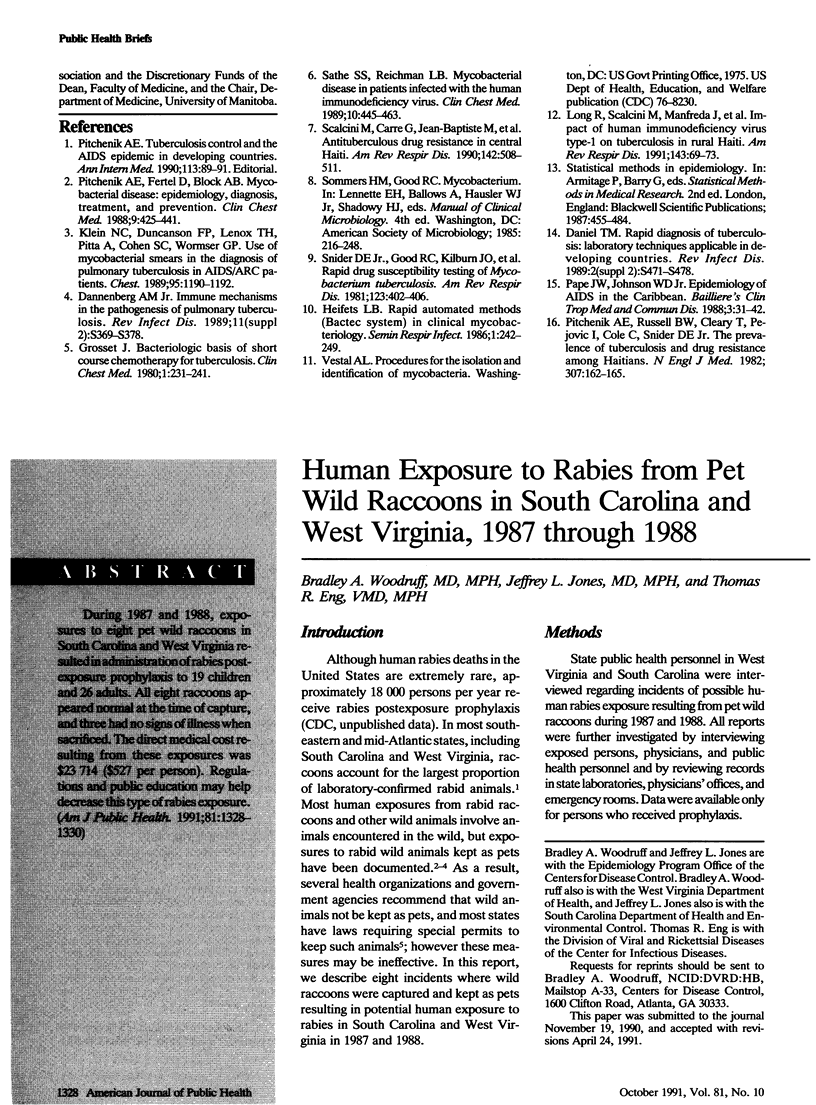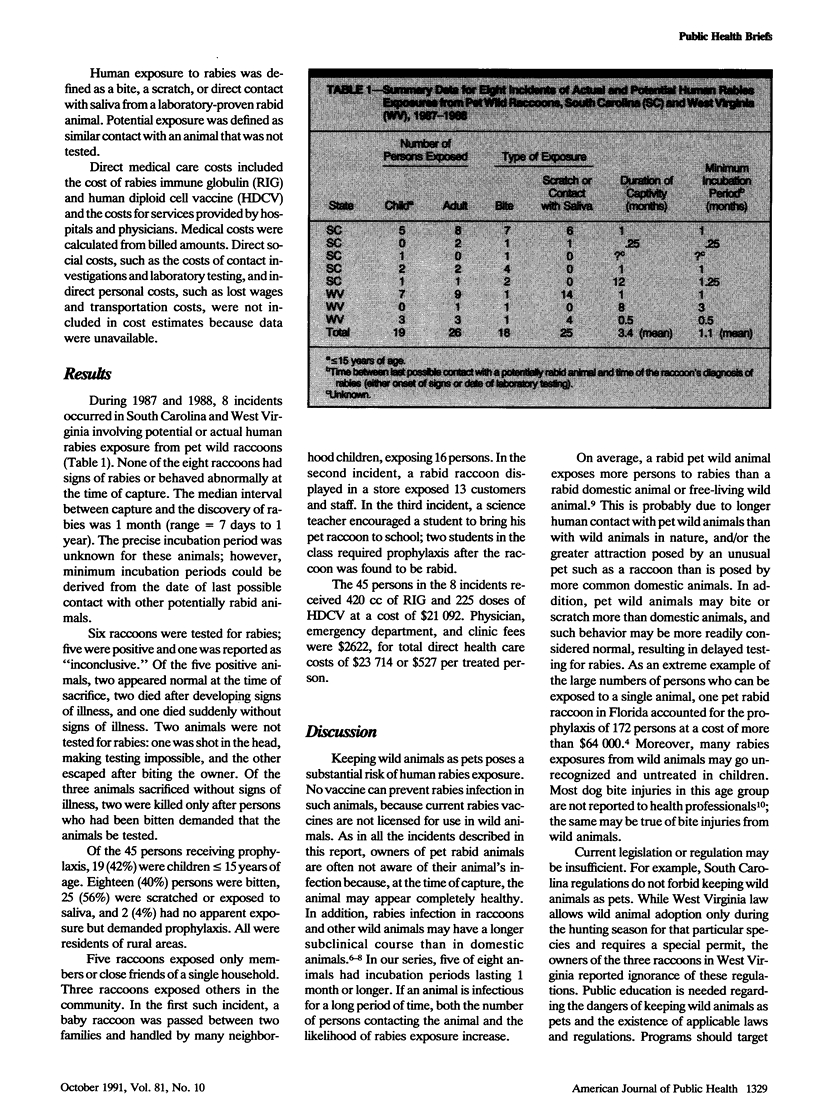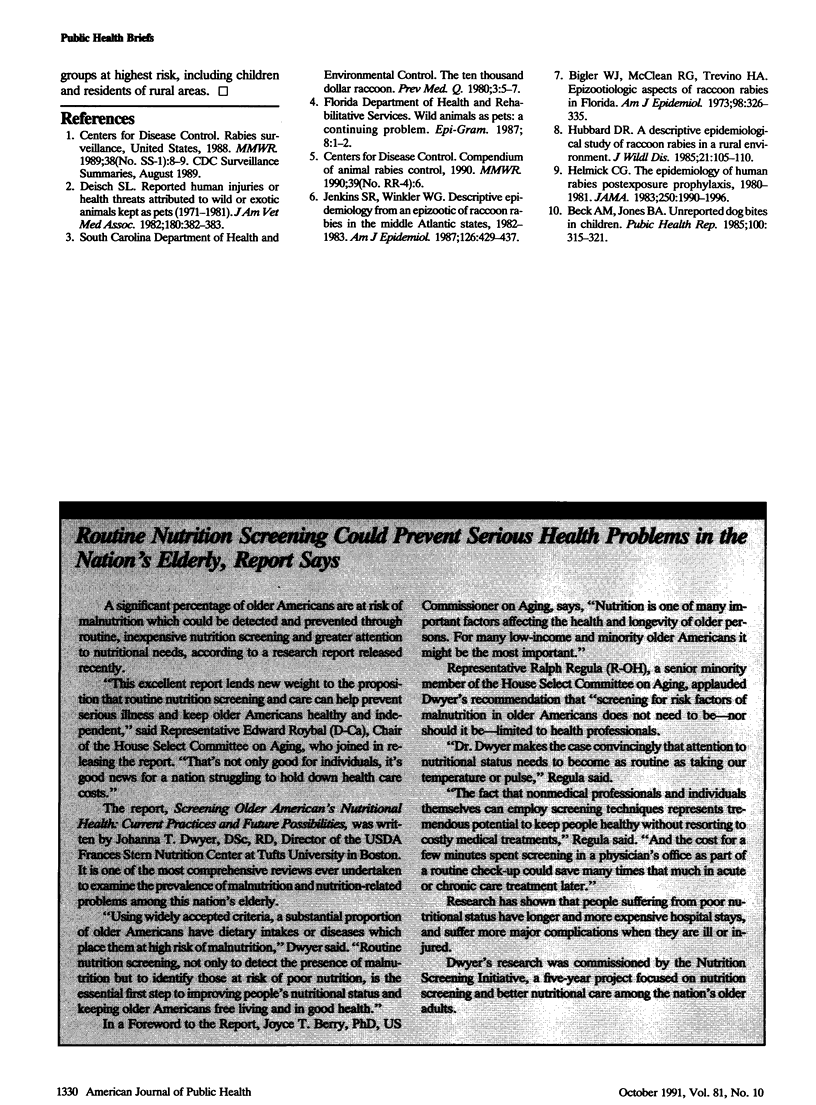Abstract
During 1987 and 1988, exposures to eight pet wild raccoons in South Carolina and West Virginia resulted in administration of rabies post-exposure prophylaxis to 19 children and 26 adults. All eight raccoons appeared normal at the time of capture, and three had no signs of illness when sacrificed. The direct medical cost resulting from these exposures was $23,714 ($527 per person). Regulations and public education may help decrease this type of rabies exposure.
Full text
PDF


Selected References
These references are in PubMed. This may not be the complete list of references from this article.
- Beck A. M., Jones B. A. Unreported dog bites in children. Public Health Rep. 1985 May-Jun;100(3):315–321. [PMC free article] [PubMed] [Google Scholar]
- Bigler W. J., McLean R. G., Trevino H. A. Epizootiologic aspects of raccoon rabies in Florida. Am J Epidemiol. 1973 Nov;98(5):326–335. doi: 10.1093/oxfordjournals.aje.a121562. [DOI] [PubMed] [Google Scholar]
- Helmick C. G. The epidemiology of human rabies postexposure prophylaxis, 1980-1981. JAMA. 1983 Oct 21;250(15):1990–1996. [PubMed] [Google Scholar]
- Hubbard D. R. A descriptive epidemiological study of raccoon rabies in a rural environment. J Wildl Dis. 1985 Apr;21(2):105–110. doi: 10.7589/0090-3558-21.2.105. [DOI] [PubMed] [Google Scholar]
- Jenkins S. R., Winkler W. G. Descriptive epidemiology from an epizootic of raccoon rabies in the Middle Atlantic States, 1982-1983. Am J Epidemiol. 1987 Sep;126(3):429–437. doi: 10.1093/oxfordjournals.aje.a114674. [DOI] [PubMed] [Google Scholar]


